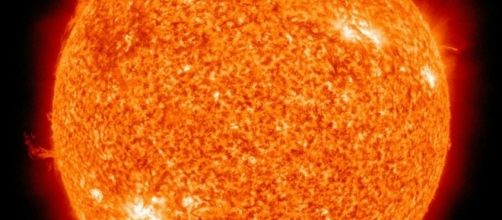#NASA has just announced the organization is going to send its very first mission to "touch the sun". This means that the probe will dive through corona, (the aura of plasma that surrounds the sun) itself, withstanding immense heat and radiation that has never before been experienced by any other spacecraft.
The space agency’s ambitious mission is called Parker Solar Probe, in honour of renowned American solar astrophysicist, Eugene Parker. Set to be launched in the summer of 2018, the mission will come within four million miles of the sun’s surface in an attempt to examine its atmosphere, said NASA.
NASA's first-ever mission to our sun goes from idea to reality. Learn more about Parker Solar Probe: https://t.co/rCW4AVGrUd pic.twitter.com/Tby2QlG8qy
— NASA Sun & Space (@NASASun) May 31, 2017
About the mission
The spacecraft that will cost approximately £1.1 billion to build, launch and operate, it will fly by Venus about eight weeks after launch. With a 4.5-inch coat of carbon-composite solar shields, the probe will make its closest approach in about 16 weeks into the mission.
It will be carrying sensitive instruments to measure electrical fields, electrons, heavy ions and magnetic field along with a camera to send first-ever images from within the corona. In November 2018, the spacecraft is expected to go into an independent orbit of the sun.
Each orbit will take approximately 88 days to complete, just like Mercury's orbit of the sun.
This endeavor will mark the first time a human-built machine has ever touched a star, literally. The nearest any spacecraft has ever gotten to the solar surface was 27 million miles, a feat achieved by the Helios 2 spacecraft in April 1976. The spacecraft provided critical information on the solar wind, solar plasma, and cosmic rays, etc.
Why is this probe significant?
According to NASA, the data collected during the probe will help them figure out why the sun’s corona is about 100 times hotter than the surface of the sun, which has a temperature of around 6,000° C.
Moreover, the mission is also expected to investigate the origins of solar wind - that can accelerate up to 400 miles per second - and the solar storms, eruptions of mass and energy from the sun’s surface.
These solar storms send a stream of electrical charges and magnetic fields towards the Earth. This phenomenon can disable communication satellites and cause potential damage to electrical grids on our planet.
The mission will also help improve forecasting of crucial space weather events that could impact the lives of astronauts, or the Earth.
The mission was earlier named as Solar Probe Plus
The path-breaking solar mission was originally called the Solar Probe Plus. It was later changed to Parker Solar Probe to honour Eugene Parker, the American solar astrophysicist who predicted high-speed solar wind.
This is the first time that a NASA probe has been named after a living scientist, according to Thomas Zurbuchen, Head of NASA Science Mission Directorate.
In the mid-1950s, Parker developed the theory of solar wind and the Parker spiral shape of the solar magnetic field in the outer solar system.
His research revolutionized the way scientists perceive the sun and interplanetary space.
During the press conference held on May 31st, Parker was awarded NASA’s distinguished public service medal, the highest award from the space organisation for non-governmental personnel. He was also presented with the first scale model of the probe.
Furthermore, there will be a chip carrying images of Parker, his scientific papers and a plate with an inscription of his choice placed on board the spacecraft, said Nicola Fox, mission project scientist at the Johns Hopkins University Applied Physics Laboratory, at the conference.


